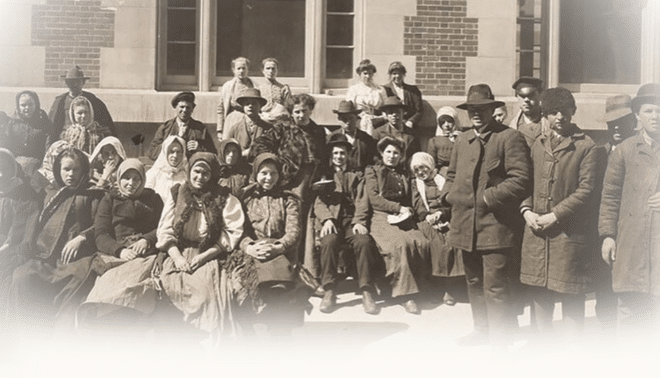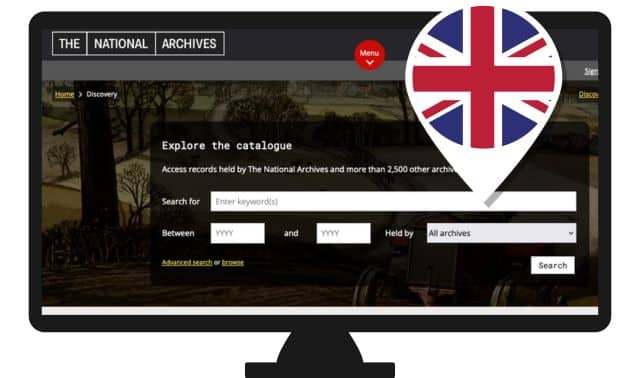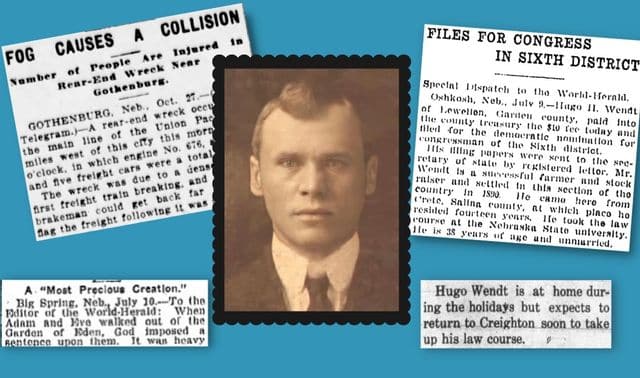Sign up for the Family Tree Newsletter Plus, you’ll receive our 10 Essential Genealogy Research Forms PDF as a special thank you!
Get Your Free Genealogy Forms
"*" indicates required fields
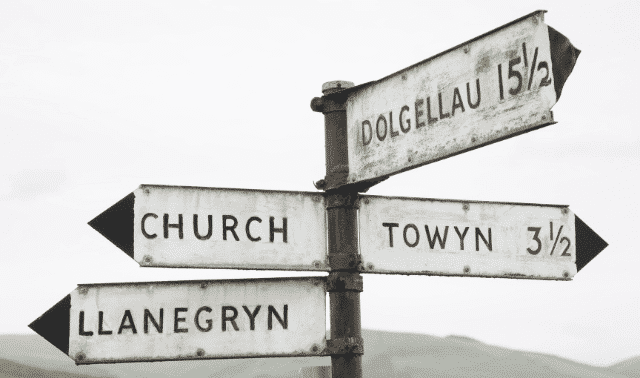
Genealogists have long used the term “chain migration” to describe the pattern by which our immigrant ancestors followed their family and friends across the ocean, settling together in the United States. Passenger lists from the early 1900s make it easy to spot this common pattern. They name the traveler’s closest relative still in his place of origin, the person who paid his passage (in an effort to prevent contract labor), and the person he was going to meet in the United States. Immigration officials also would often note when a male relative claimed an unaccompanied female passenger at the port of arrival.
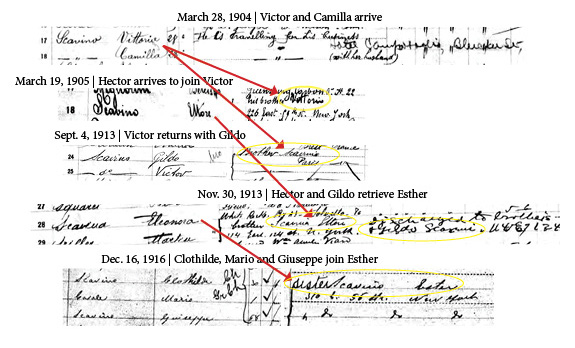
Summary written by Ashlee Peck, from the May/June 2018 issue of Family Tree Magazine.
One of my favorite all-time quotes is by John Donne: “No man is an island.” Nowhere is that more true than when researching my Welsh ancestors. (John Donne was of Welsh descent himself on his father’s side, so perhaps he spoke from experience.) However overused the saying is, it’s a fact that cluster research is a handy tool for finding one’s ancestors, as I found when one missing name on a passenger list led to a chain of discoveries.
The Missing Record
I started with a theory: My great-great-grandfather, Daniel P. Davies, came over to America first from Wales with his wife and children following after.
Census records put my great-great-grandmother Elizabeth’s immigration date at 1888, so I went searching for her passenger list. I found a record for her and her children for 21 December 1887, through Philadelphia. It included her under the name Eliza (25) wife, her daughters Gwlladys (3) child, Martha (2) child, Margret J.(1) child, and Morgan (20) Laborer. Who was Morgan? I suspected he was her brother-in-law.
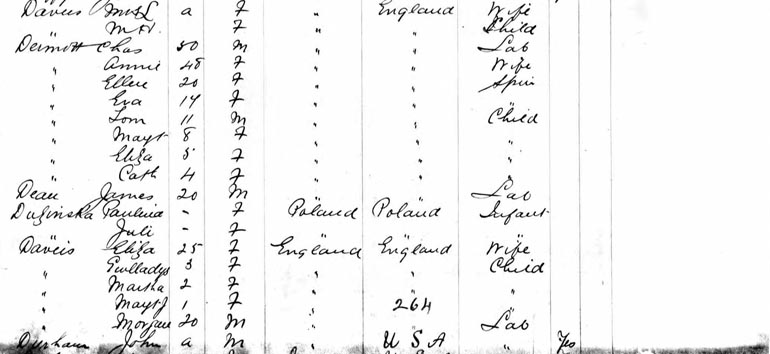
However, Daniel is not on the passenger list. My initial search for him turned up no good results. While there are plenty of Welshmen by that name, nothing came up as definitively my Welsh ancestor. This was going to take a bit more legwork.
The births of Daniel and Elizabeth’s daughter Margret (~1887) and their next oldest child, born in the US (also a Morgan, ~1888), narrowed down the time frame I needed to search. Barring extraordinary or scandalous circumstances, Daniel had to have been in Wales at least through most of 1886 and possibly 1887.
Not quite good news
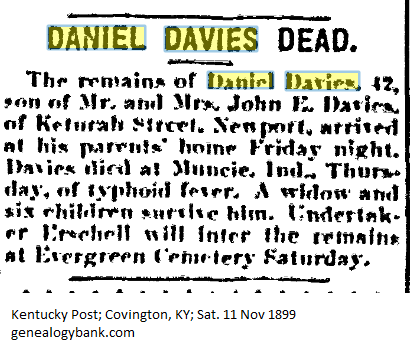
The key discovery from that obituary: Daniel’s parents also immigrated to the United States. Therefore, my theory that he came over first and paved the way for his family expanded to include his parents and siblings. Just how many people came over, and when? And more importantly, could those dates help me find Daniel’s passenger list? With those questions in mind, my next steps will be to search for his family’s passenger lists.
Chain Migration: Establishing the links
Chain migration is when a series of people from the same place follow each other to a new destination. I already have Daniel’s wife, children, and brother Morgan, who came over from Abertillery, Wales, in December of 1887. Additionally, finding a passenger list for his parents was easy. They arrived in Philadelphia on the 30th of September, 1888, along with three of their daughters, Elizabeth, Anny, and Alice. It lists Cincinnati as their destination. They knew exactly where they were heading.
So I now have two groups that traveled together, which account for Daniel’s parents, four of his siblings, his wife and children. That leaves four other siblings — and Daniel himself — still unaccounted for. Unfortunately, that’s where my search for passenger records ran aground.
Checking the Census
My next step was to check the census records for citizenship information. The 1930 US census shows my third great-uncle, David Humphrey, as having immigrated in 1885. The 1920 census shows 1888 as the year and indicates that he was naturalized in 1894.
He would have been between the ages of 12 and 15 when he came to the US. Did he come over with Daniel?
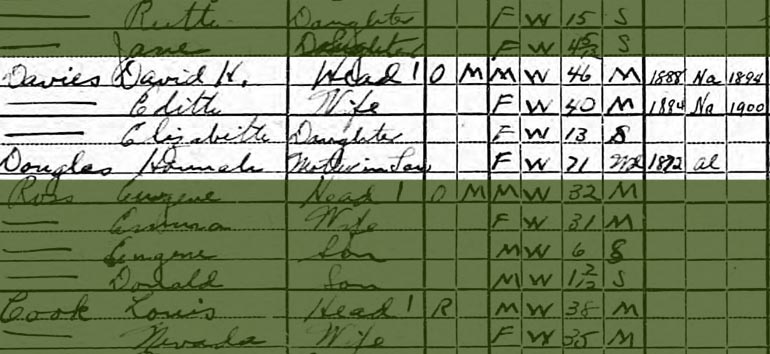
Searching for both names (Daniel and David) based on the 1885 date didn’t turn up anything promising, and given that Daniel was most likely still in Wales at least through most of 1886, the 1888 date is far more likely for David. Meanwhile, their other brother, William, also has a 1920 census record that shows the date of 1888 for arrival. It’s possible that he and David came over together. It bears investigating.
Naturalization Records
Since the census records indicated they were naturalized, the next place I looked was naturalization records. In the case of my Davies ancestors, these are accessible through the University of Cincinnati Archives and Rare Books Library. And there I found some promising leads in the Index:
- Davies, Daniel; age 30, from England. Departure date, 27 July, 1887 from Liverpool, arrived August 12, 1887 in Newport News, Virginia. Declaration date: November 2, 1889.
- Davies, John Ebenezer; age 53, from England. Departure date, September 19, 1888 from Liverpool, arrived 30 September, 1888 in Philadelphia. Declaration date: November 2, 1889.
- Davies, Morgan J; age 24, from Wales. Departure date, December 8, 1887, from Liverpool, arrived 23 December 1887 in Philadelphia. Declaration date: October 3, 1891.
The key takeaway from this is that the declaration date provides a link between John and Daniel. They seem to have declared on November 2, 1889, which makes it likely this is my Welsh ancestor, Daniel Davies. It’s not the passenger list and I’ll need to look at the original naturalization records, but it is a solid lead.
He arrived on August 12, 1887, a few months before his wife and children, and a year before his parents.
Don’t forget the passport
But what about the other siblings? I didn’t find any passenger lists or naturalization record for William, but I know he came over. What I did find, however, was his passport application, which is a goldmine of information (including a photo!)
In his passport application, William Davies declares that he came over on the Steamer Roman from “Liverpool, England on or about June 11th, 1888.”
The passport application also contains his final papers of citizenship, which contains the dates in which he first applied (14th of April, 1892) and granted his final papers (31st of May, 1902).
Back to where we started: Abertillery, Wales
So now we have the dates of when my great-great grandfather, his parents and all but two of his siblings arrived. According to their mother’s obituary, the two oldest girls, Rachel and Margret Ann, stayed behind in Wales, so they, at least, were not part of the chain migration.
The next step is tracing my Welsh ancestry back across the pond, so I’m hoping some of their descendants will do a DNA test soon, which could lead to new cousin connections. And, of course, there are my Welsh ancestors in the Powell and Samuel lines to trace, too. Were any of them part of the chain migration?
ADVERTISEMENT


